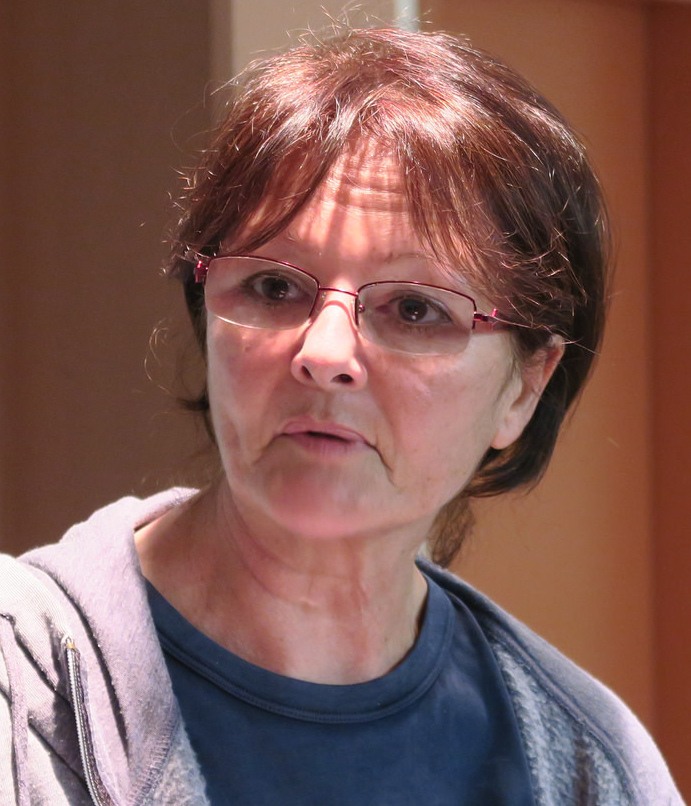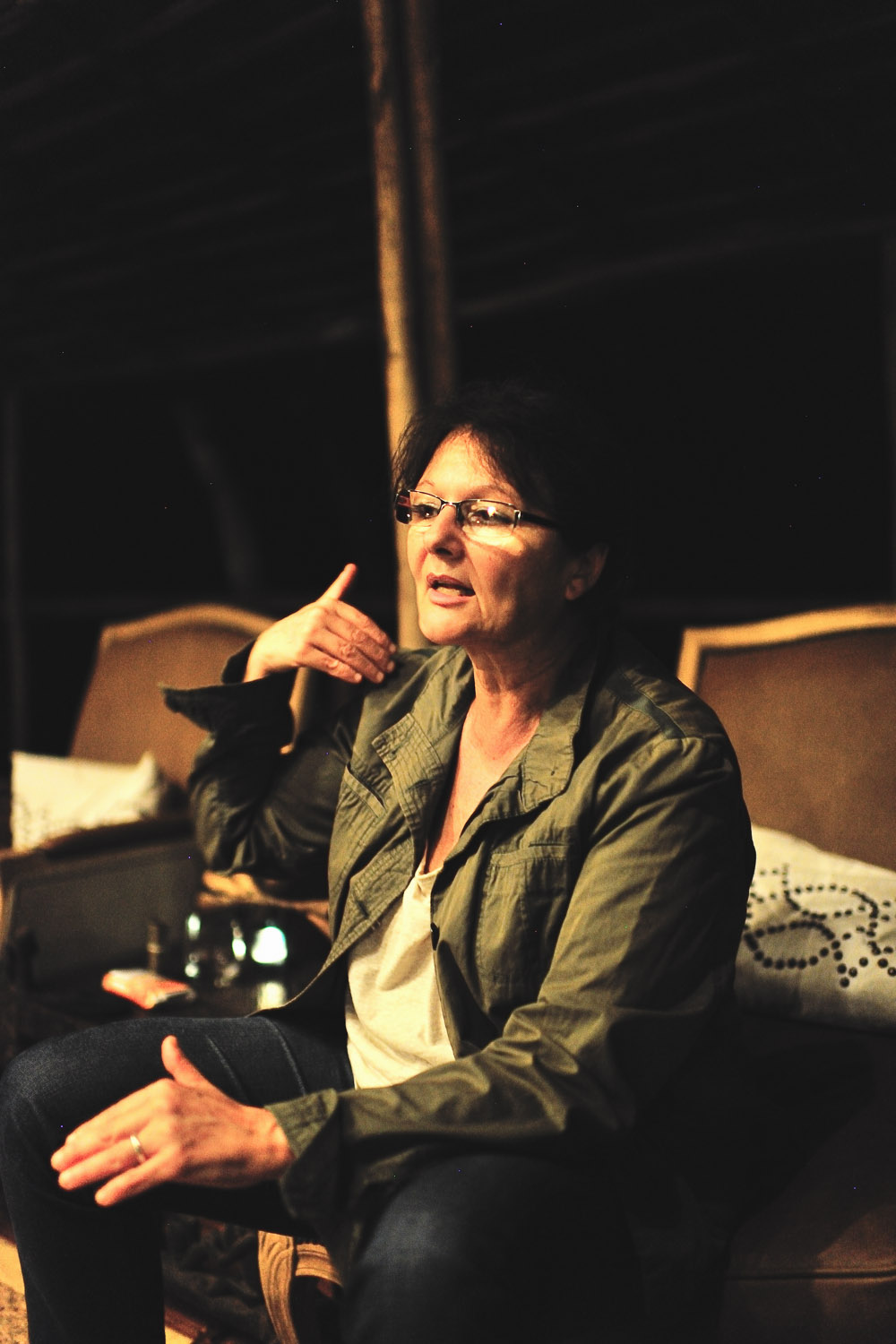Magdalena Bermejo
Researcher & Naturalist
Dr Magdalena Bermejo - saving the gorillas
Researcher | Species champion | Field Biologist
Magda Bermejo was a Spanish primatologist working in the forests around Mbomo at the time of the great ebola outbreak in 2002/3. In 1991, she'd come to this swath of central Africa, where 80 percent of the world's gorillas and chimpanzees are believed to live. This is where she'd seen her first gorilla in the wild, and in 1998 she became the first person to "habituate" western lowland gorillas to human presence, the crucial and grueling precursor to studying them. The process takes three years and requires locating groups and visiting them every day - often over an area of a dozen square miles or more.
What Jane Goodall was to chimpanzees in Tanzania and Dian Fossey to mountain gorillas in Rwanda, Magda Bermejo soon became to central Africa's western lowland gorillas. Some 2 million years ago, gorillas cleaved into two separate species, eastern and western. The eastern ones became the largest and include the mountain gorillas commonly visited in Rwanda and Uganda, while the western ones became more numerous, thanks to a larger habitat, and more muscular, agiler, and more active.
HER STORY (from Wikipedia.org):
Magdalena (Magda) Bermejo (born c. 1962) is a Spanish primatologist and world authority on the western lowland gorilla. Since 1991 she has lived for long periods with her husband, German Illera, in the rainforests of the Republic of Congo, conducting research and becoming increasingly involved in gorilla conservation. She estimated that 5,000 gorillas died from Ebola in Gabon and the Republic of Congo.
Bermejo grew up in Madrid. She began her career as a child psychologist and later as a primatologist.[2] Sometimes known as the "Dian Fossey of the Congo",[2] she currently works for the Programme for Conservation and Rational Utilization of Forest Ecosystems in Central Africa (ECOFAC), a European Union-sponsored program that establishes a regional framework for conserving rainforests in central Africa. She is also a member of the faculty in the Animal Biology Department in the University of Barcelona in Spain.
Primate research
Bermejo first visited Africa in 1986, at the age of 22, to study chimpanzees in Senegal. Then she went to the Lilungu (Ikela) region in Zaire (now the Democratic Republic of the Congo) to study bonobos with a colleague from Barcelona, Jordi Sabater Pi. They began work in 1988 and were forced by war conditions to end it in 1990. Conservationists feared that the bonobos had not survived the war, but a population of bonobos was found in the area in 2005.
While in Barcelona, Bermejo met and married German Ilera, a Spaniard who started as a law student and then became a videographer and naturalist. In 1991, the two started studying gorillas in an area that later became the Lossi Sanctuary. They were the first people to habituate western lowland gorillas to human presence. A prerequisite to studying them, habituation requires daily visits over about three years. By 2002, they had identified 10 social groups in a population of 143. Her work was described in a National Geographic video of 2001.
Between October 2002 and January 2003, at the same time that humans in nearby villages were beginning to die from the Zaire strain of the Ebola virus disease (ZEBOV), 130 of the 143 gorillas died. The researchers monitored seven more social groups, and found that 91 of 95 gorillas died between October 2003 and January 2004. Extrapolating from these results, they estimated that in a 2,700-square-kilometre (1,000 sq mi) area around the Lossi Sanctuary, about 5000 gorillas died. Because of the high mortality rate, the International Union for Conservation of Nature (IUCN) listed the western lowland gorilla as Critically Endangered, one step away from Extinct in the Wild.
Bermejo has continued to study gorillas after the Ebola outbreak. In 2009, she found a concentration of them near Odzala National Park. Six social groups have been found, two of which are habituated. Among the foci of the study are the impact of Ebola and interactions with other species (chimpanzees and humans).[6]
Eco-tourism and conservation
After the loss of gorillas to Ebola, Bermejo began to create community projects to help both the gorillas and the people in nearby villages. With support from Sabine Plattner African Charities, development of the nearby village Mbomo has begun, with plans for a community center, Internet and educational enrichment. Odzala Ngaga Camp, the research site of Bermejo and Illera and their home, has become a destination for safaris run by the Congo Conservation Company.
THE BACKSTORY CONTINUED (courtesey INCEF.org)
Ebola "kills over 5,000 gorillas" - more than 5,000 gorillas may have died in recent outbreaks of the Ebola virus in central Africa, a study says.
Apollo was the leader of a group of 22 gorillas. Some of the gorillas included in his group were females like Artemis, Maya and the adolescent Aphrodite. Others like Ulysses and Prometheus were males who might take over the leadership of the group. In 1991, Dr. Magdalena Bermejo and her cinematographer husband, German Illera started doing research in the forest where Apollo and his family lived. They were the first team to habituate western lowland gorillas to human presence. Apollo’s group got used to people being around and we began to learn about Western Lowland Gorillas for the first time.
Then in November of 2002, one of the trackers noticed that the size of the group had changed. The trackers noticed that the gorillas were stressed and Prospere described the females as crying. They began to find carcasses in the forest. Dr. Bermejo and her husband, who had gone to Spain for the holidays, were called back to their study site. By January they searched the forest and discovered that Apollo’s group had completely disappeared and was feared dead. More than 150 gorillas died at Lossi and estimates are that thousands have died in the region.
ECOFAC, the conservation organization working in the region called in a team of medical experts. They soon discovered that the cause of death was Ebola hemorrhagic fever. More dead chimpanzees and gorillas were being found outside the sanctuary motivating concern that the Ebola virus was headed toward Odzala National Park. Odzala contains the densest population of chimpanzees and gorillas in central Africa.
People in the area began to get sick as well, and the infection was traced back to the consumption of Ebola tainted gorilla meat.
As of August 2004 at least 200 people have died of Ebola. Scientists are now realizing that Ebola is a more important factor in the decline of great apes (by almost 50%) across central Africa in the last two decades than the bushmeat trade or deforestation. Other scientists are working to identify the reservoir that houses the virus in order to understand how the disease is spread. Today, Dr. Bermejo and her trackers are working to find out exactly how many gorillas have survived at Lossi. Only a handful of solitary males have been located. At Odzala National Park, Bermejo and Illera are doing surveys to see how Ebola has affected the great ape populations there. At one clearing where at least 18 groups congregated, more than half of those groups are missing and carcasses are being found in the forest.
The ecosystem of Lossi and Odzala have become a hot zone – a living laboratory for us to try to understand the spread of Ebola.ARTICLES OF INTEREST:
The Living Forest by Sophie Smith with Africa Geographic magazine
Saving the Gorillas—and Launching a Nation's Tourism Economy with The Atlantic
Go back to: Researchers & species experts
PUBLICATIONS
• Bermejo, Magdalena (1999). "Status and conservation of primates in Odzala National Park, Republic of the Congo". Oryx 33 (4): 324–332. doi:10.1046/j.1365-3008.1999.00081.x.
• Walsh, Peter D.; Abernethy, Kate A.; Bermejo, Magdalena et al. (2003). "Catastrophic ape decline in western equatorial Africa". Nature 422 (6932): 611–614. doi:10.1038/nature01566. Retrieved 13 November 2013.
• Leroy, E. M.; Rouquet, P.; Formenty, P.; Souquiere, S.; Kilbourne, A.; Froment, J. M.; Bermejo, M. et al. (2004). November 2013 "Multiple Ebola Virus Transmission Events and Rapid Decline of Central African Wildlife". Science 303 (5656): 387–390. doi:10.1126/science.1092528. PMID 14726594.
• Bermejo, M.; Rodriguez-Teijeiro, J. D.; Illera, G.; Barroso, A.; Vila, C.; Walsh, P. D. (2006). "Ebola Outbreak Killed 5000 Gorillas". Science 314 (5805): 1564–1564. doi:10.1126/science.1133105.
Source: Wikipedia.org


